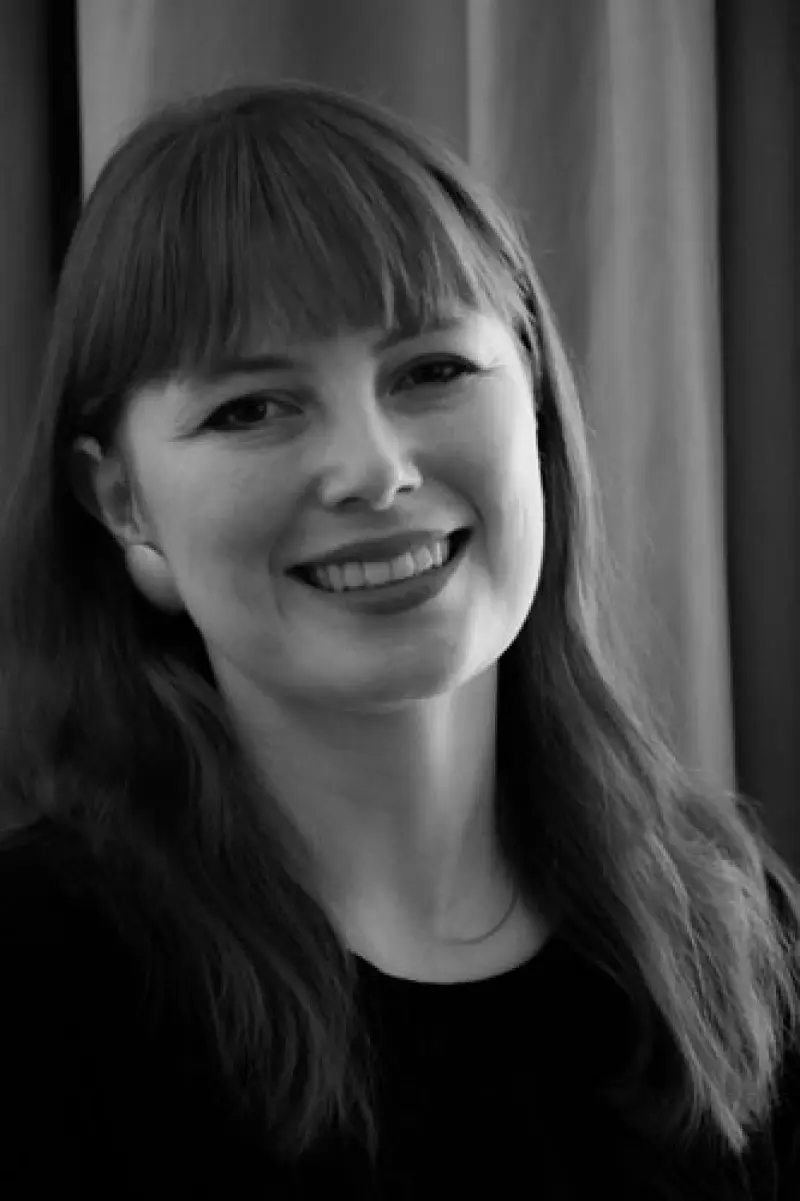R.A.W.: Anita Rosenberger
1 Dec 2023 // R.A.W
The journey among the professionals we met during the Lights in Alingsås workshop continues.
What defines a lighting designer? I have been asked this question many times by people outside the business, but I admit that I have often wondered about it myself.
My answer has always had a clear point: light is a medium and the sensitivity to use it is something that only passion for this work can bring. Curiosity and dedication are, then, two indispensable factors in the 'lighting designer' equation.
I had the opportunity to interview Anita Rosenberger, who has made all the above characteristics the foundation of her interdisciplinary approach.
BACKGROUND
Can you tell us briefly about your initial school/university life as a lighting designer and lighting engineer?
I always found it difficult to name just one profession that excited me when I was asked about it when I was younger, because everything fascinated me and I was inspired by everything. This was not helpful when choosing a course of study, as I wanted to study all of them: History, Architecture, Computer Science, Design, Art.... In the end, I chose electrical engineering because it was the least familiar and that you may study multiple years something invisible made me curious. However, I soon realised that engineers are mainly focused on the definition of tiny components and their programming. Endless error messages of your code soon kill every bit of magic.. That's why after graduation I deliberately didn't look for a classical engineering job and went to Vienna to work in the start-up scene. During this time I came closer to the lighting world and was thrilled. I started an internship as a lighting designer in Switzerland as well as my Masters course at University of Wismar. These two experiences have shaped me as a designer today. When I work with light, I wear multiple hats on a daily basis, solving technical problems and programming luminaires as a lighting engineer on one hand, and expressing my creative ideas as a lighting designer on the other.
When did you decide to start experimenting with light? Was there any specific incident/person that you met inspired you in your career-choice?
My curiosity to learn more about light started as early as my Bachelor’s degree where I had the opportunity to design and build a luminaire with an artist duo, which accurately reproduced the measured light spectrum. With this project I discovered the possibility of playfully combining technology with lighting design. My newfound fascination with light motivated me to gain further insights by attending various talks by renowned lighting designers about utilising modern lighting technology to turn their concepts into reality. I recall being inspired by one such lecture by Ulrike Brandi where she discussed the possibility of combining lighting and technology to meet the various demands of a project. Lighting design showed me a new approach to questions and to utilise light as a tool to underline existing stories, as a starting point for new narratives. This encouraged me to delve deeper into the relationship between light and the art of curation as a part of my advanced studies alongside my Masters. Building on the theme of communication my studies also emphasised the importance of process and participation. This research wove itself into my master's thesis, where I explored how public lighting can support local identity.
LIGHTS IN ALINGSAS
What is your thought process in developing temporary light-art installations?
Although such light-art installations are temporary, their impact on the local community’s identity is long lasting. For instance, today the Lights in Alingsås festival is known worldwide and has largely influenced the town’s global identity and local economic prospects positively. During this time of the year the town immerses in an elevated sense of community.
The thought process begins with establishing a narrative which takes into consideration various social, cultural and environmental factors and are furthermore connected to the macro and micro surroundings of the installation. Keeping the community at the centre of the design process the intent further evolves with various analyses. Creating an impactful piece is not only about experiencing the lit environment but also about evoking emotions, raising questions and generating awareness.
The next part of the process involves conceptualisation, preliminary mock-ups and taking feedback from the local representatives. Bringing the installation into reality also requires consideration about maintenance, feasibility and technology.
Nevertheless, lighting design is an interdisciplinary profession and it was never as evident for me as in the realisation of temporary light-art installations, where team members of various professional backgrounds collaborated together throughout the process.
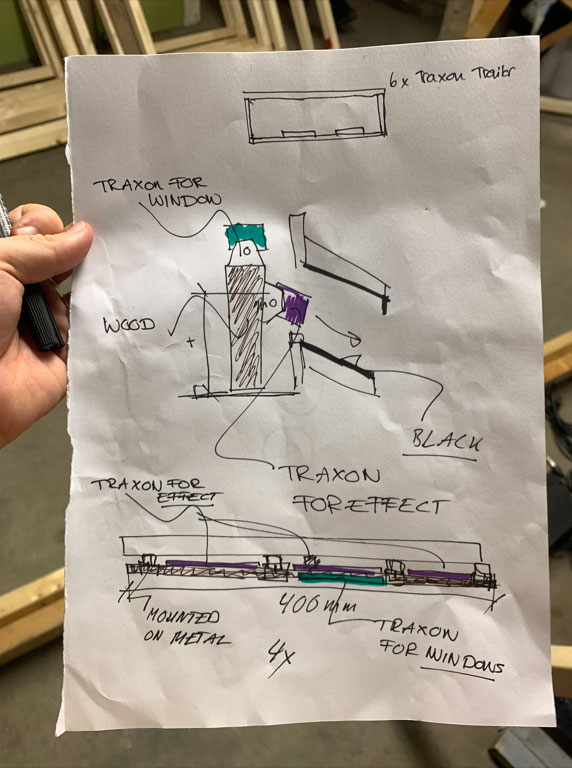
Sketching at LIA workshop 23. Photo by Anita Rosenberger
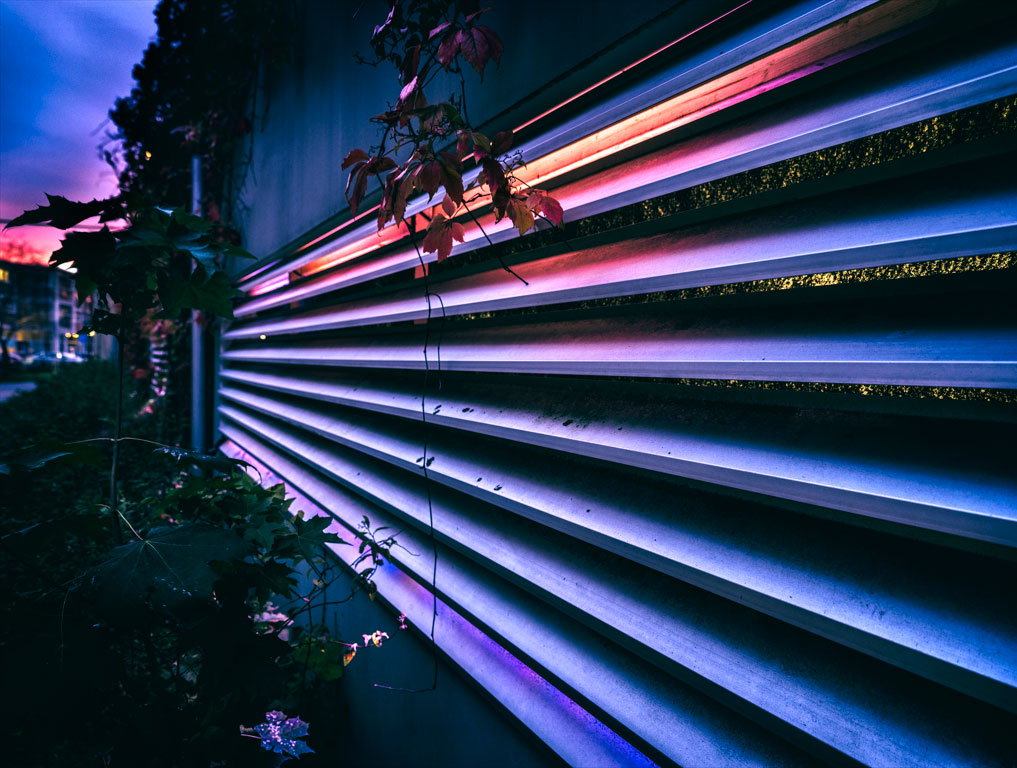
LIA23 LILLÅN Site 1, photo taken by Patrik Gunnar Helin
PRESENT
Tell us about your work. Any specific project that is very dear to you?
At the moment, my work focuses on the public lighting projects within various municipalities, where my scope includes illumination of parks, public buildings, churches, bridges and other communal spaces. In these projects I am responsible for all project stages from concept presentation to installation. While it's challenging to pinpoint a favourite project, the most gratifying moment for me is when the newly installed lighting comes to life, marking the first interaction between the public and the new installation. In a design process where the public is not actively included, sometimes there are comments but more often there are subconscious adjustments of behaviour, which I love to observe.
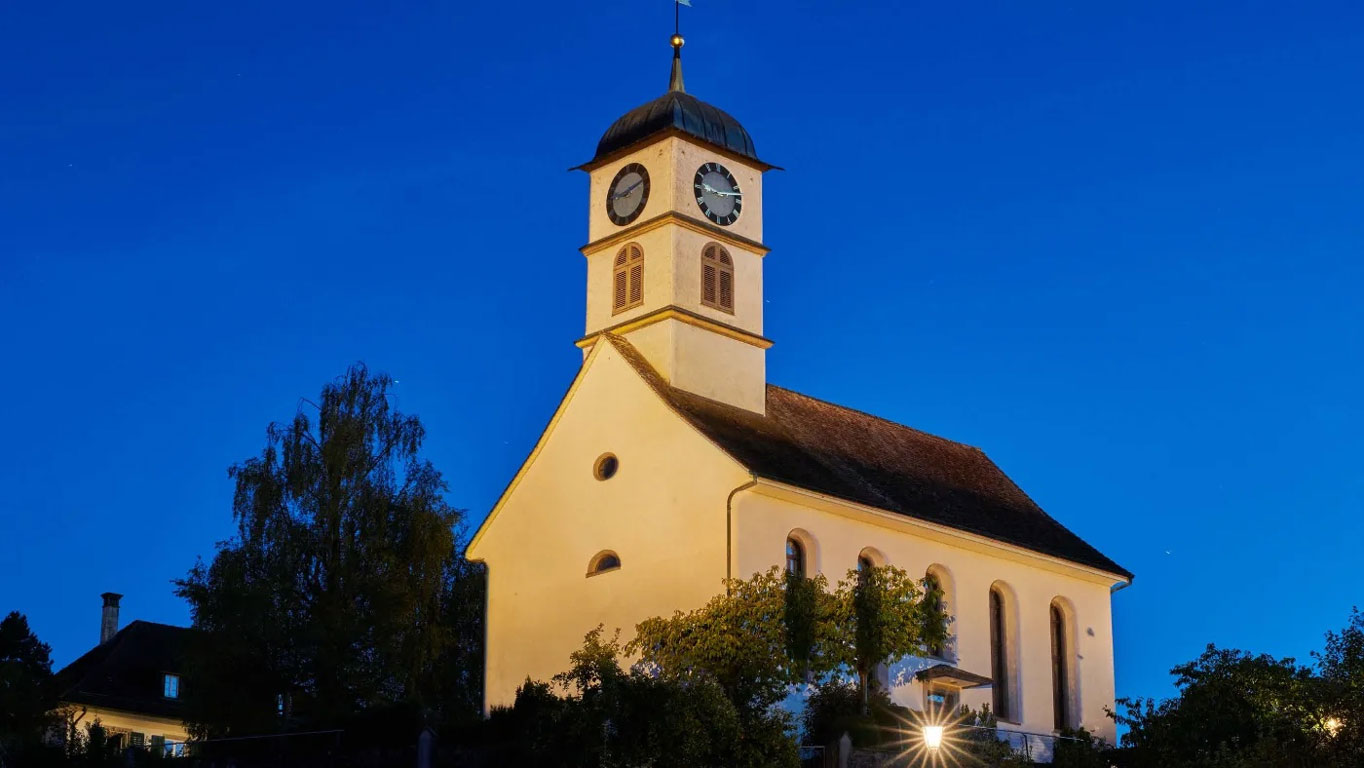
Town Church Small Municipality near Winterthur, Switzerland. Photo taken by Norbert Egli
Do you feel you can make the difference in the community through light?
The culture of light in Switzerland, where most of my projects are situated, perceives light as a predator of darkness. I often work on projects with the requirement to reduce illumination levels at all costs. I strongly believe that light and darkness need to be equally respected in each project. To create this balance, various needs of the society in the public space require keen consideration. My personal objective is to provide a platform for less prominent stakeholders, and it is through the medium of light that I can affect meaningful change within the community.
Can you tell us about any feedback that you get from the general public that makes you feel happy about the work that you are doing & makes you realise the difference you are making through your work?
When I go on site, I have the privilege of encountering the unscripted, everyday remarks and actions of individuals who inhabit these spaces. These moments serve as reminders of the transformative impact I've brought to the community. For instance, in the heart of an old town on a wintry night, I overheard an elderly lady whimsically noting that it felt like a holiday and expressing her desire to sit outdoors with friends. I witnessed a child proudly proclaiming her newfound ability to navigate a steep, uneven staircase independently, and a neighbour's contentment with improved sleep, thanks to a reduction of pollutant light from flood lights. Observing people interact with these spaces in novel ways, whether it be through leisurely outdoor gatherings, spontaneous play, or casual conversations, is the most gratifying validation of my work.
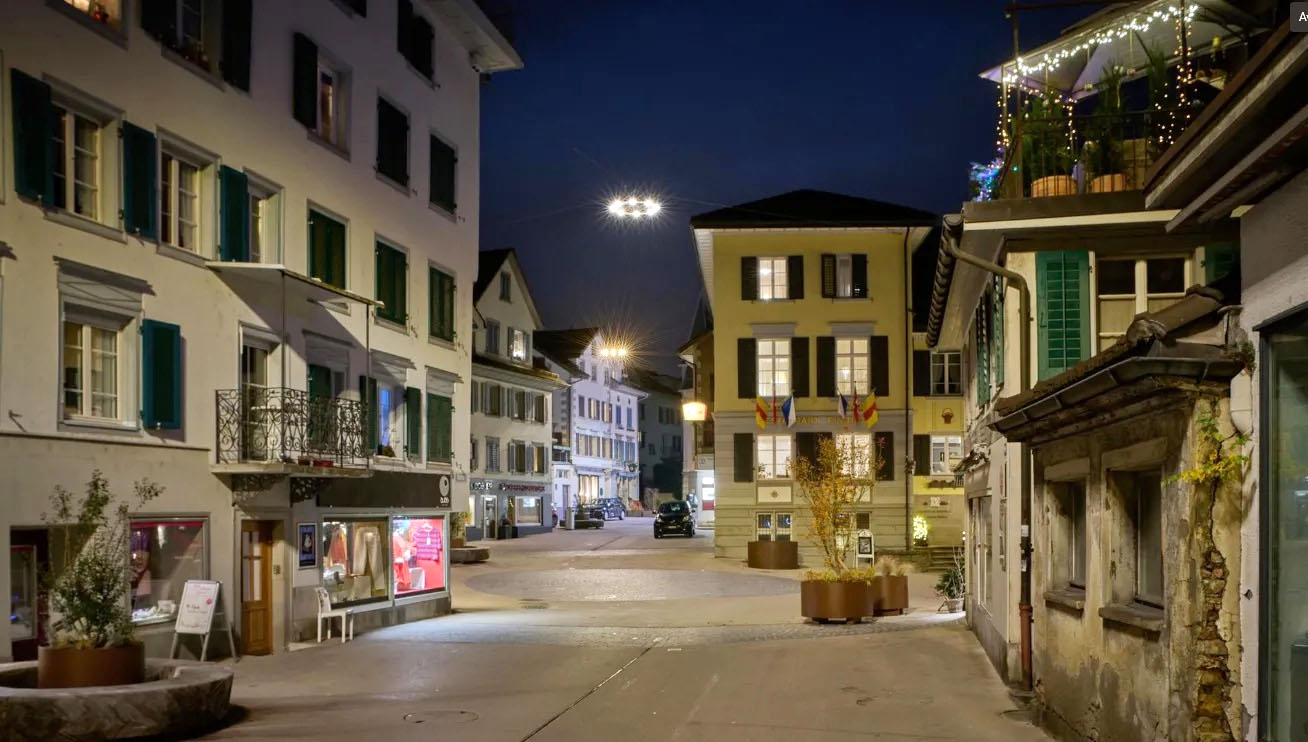
Old town illumination with tunable white, Municipality near Zurich, Switzerland. Photo taken by Norbert Egli
REFLECTING ON PAST / FUTURE
As a female designer did you have any experiences which were more gender-biassed?
In the world of lighting design, which historically tilts toward male dominance, I've found a refreshing sense of equilibrium and inclusivity that transcends gender biases. I believe in the intrinsic value that each individual, regardless of their gender or background, brings to a project through their unique talents and knowledge. My personal experience has consistently reinforced that, when one extends respect and equal opportunity to all, it fosters a reciprocal dynamic. However, occasionally with certain technical team members, as a woman, I’ve had to assert myself a touch more. Though, I’m pleased to note that such instances have become increasingly infrequent over the last few years, reflecting a growing awareness and progress in this matter.
What are the goals for the future?
I wish to positively impact the users and visitors of the spaces I illuminate, both in public as well as interior spaces. As light interacts directly with the subconscious mind, I see myself responsible for creating a calming and relaxing environment for everyone. Another goal of mine is to work with different cultures and with people of various backgrounds to learn as much as possible from their experiences. Lastly, I am aware of the resources we all use as lighting designers, and since we work in the construction industry I wish to design sustainably and respect the darkness of the night.
Under the big 'light' umbrella sit all those professionals experimenting with the various declinations of this marvellous medium, so that everyone can enjoy both the visual and non-visual effects of good lighting.
Bravo Anita!
R.A.W Blogger
Martina Frattura

